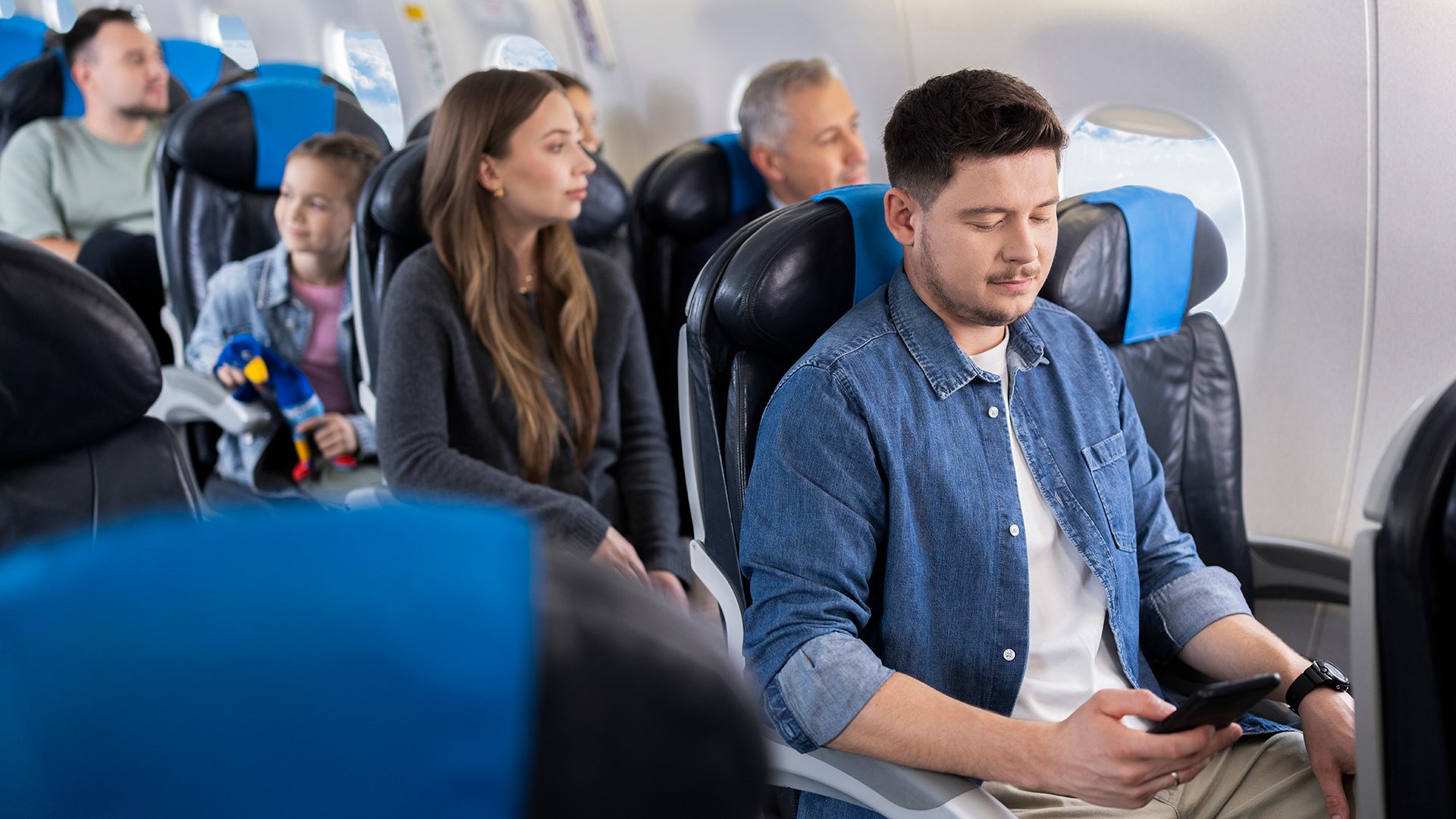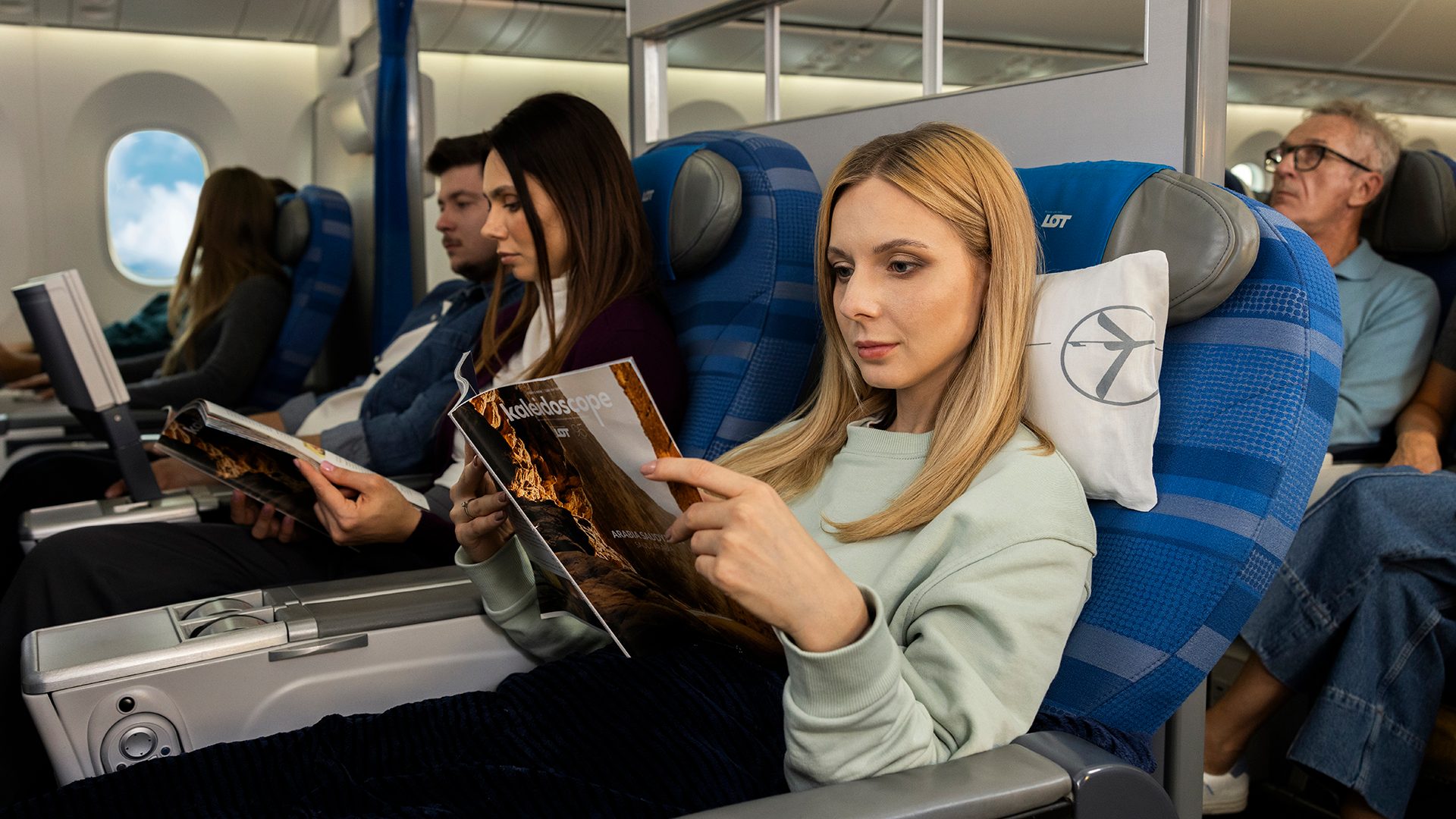Swollen legs during travel? Learn how to prevent this and take care of your circulation on the plane
🕗 4 minutes | September 9, 2025 | Material prepared by Politykazdrowotna.com
Long hours on a plane, limited space, and lack of movement—all of these factors can cause your legs to feel heavy, swollen, and tired after landing. Why does this happen, and what can we do to prevent these ailments? We talk to physiotherapist and trainer Małgorzata Włodarczyk, known online as @pani_fizjotrener.

Summary for busy people
In this article, you will learn why your legs swell on a plane and how you can prevent it. Physiotherapist Małgorzata Włodarczyk explains how to improve circulation through hydration, appropriate clothing, exercise, and breathing. She also gives tips on what to do after a flight to quickly regain lightness and comfort.
Who experiences leg swelling the most when traveling? The most common causes of swollen legs
Overweight people, those with venous insufficiency, those with implanted valves, and those with cardiovascular or metabolic diseases, as well as the elderly, are most at risk of circulation problems during flight. However, even passengers who are not in the risk groups may experience discomfort after a long flight, such as heavy legs.
“Even completely healthy people who spend a lot of time sitting may notice swelling, pressure, tingling, or a feeling of heaviness in their legs. This is the result of immobility and the lack of muscle pump activity, especially in the calf and pelvic floor muscles,” explains Małgorzata Włodarczyk.
In addition, the cabin has lower pressure and reduced humidity, which can lead to faster dehydration and thickening of the blood and lymph—another factor contributing to swelling, as the physiotherapist points out. Fortunately, there are simple and effective ways to make our bodies feel comfortable during a flight.
Prevention matters! Prepare your body for travel by staying active and hydrated
It's not just what happens in the air that matters. It's worth preparing for your trip in advance.
“It's good to just… walk at the airport. Before boarding the plane, take a walk, do a few toe raises, squats, and simple hip circles. On the day of travel, I recommend light training—exercising your muscles will improve blood flow,” advises the physiotherapist.
Hydration is also critical. Water—not coffee or alcohol—should be our main companion during the flight. Alcohol and caffeine further dehydrate the body, and a lack of water in the body does not help maintain proper circulation.

Can swelling be prevented by wearing the right clothing?
Not many people know that the choice of clothing for travel affects proper circulation.
“Avoid tight leggings, shaping tights, or jeans that constrict the waist. Loose, breathable clothing made of natural materials is better. This allows the body to regulate its temperature better and function freely,” says Włodarczyk.
A different approach is recommended if you have been diagnosed with a phlebological condition—in this case, don't forget to wear compression stockings or knee-highs. For people with varicose veins or chronic venous insufficiency, these are essential for any long journey.
Does raising your arms help improve circulation in your limbs? A remedy for swollen ankles
The mechanism of improving blood and lymph circulation in the body through movement is based primarily on activating the muscle pump, which supports the cardiovascular system—especially in the lower limbs, where blood must overcome gravity to return to the heart. Małgorzata Włodarczyk explains how complex this process is.
“When we raise our arms, we stretch our abdomen, improve the space around the abdominal aorta, relax the diaphragm, and open the chest. All of this promotes better diaphragmatic breathing, which, importantly, also supports the flow of venous blood to the heart and promotes blood circulation throughout the body, including the legs," explains the expert.
Breathing – a simple exercise that really works
Diaphragmatic breathing is one of the most effective exercises for supporting the circulatory system, which is worth doing during a long plane journey.
“Just place your hands on your lower ribs and focus on inhaling through your nose and exhaling calmly and slowly, also through your nose. Inhale for four counts, exhale for six. After just a few cycles, you will feel a noticeable sense of relaxation,” says Małgorzata Włodarczyk.
And for the more advanced? The “box breathing” technique, i.e., breathing in equal phases (4 seconds inhale, 4 seconds hold, 4 seconds exhale, 4 seconds hold).

“It's a great way to calm the nervous system and improve circulation,” adds the physical therapist.
How does breathing affect circulation? The diaphragm is a large, dome-shaped muscle that separates the chest from the abdominal cavity. With each inhalation, the diaphragm lowers, and with each exhalation, it returns to its original position. This movement acts like a suction-pressure pump, drawing venous blood from the lower parts of the body toward the heart and improving blood and lymph flow from the abdominal organs and lower limbs.
What's more, during a deep breath, the pressure in the chest drops, which facilitates the flow of blood to the heart (from the main veins), and the pressure in the abdominal cavity increases, which pushes blood from the visceral vessels upwards. This pressure gradient acts like a system of pipes with a piston that supports natural circulation.
Exercises on the plane – get rid of swelling without leaving your seat
During a long flight, we remain motionless and do not always have the opportunity to get up and walk around. Fortunately, there are simple exercises that can be done while sitting:
- Toe raises—lifting your heels with your feet on the floor (2–3 sets of 10 repetitions).
- Foot circles—one leg at a time, several repetitions in one direction and then the other.
- Knee lifts—alternating, without lifting your back off the seat (2-3 sets of 5 repetitions).
- Seated cat pose—alternately rounding and straightening your back, exhaling (pressing your lumbar spine into the backrest) and inhaling (pushing your chest forward).
- Pelvic rocking—lifting one buttock and then the other.
It is also a good idea to get up every hour and walk to the toilet, for example. While waiting in line, we can add a few toe raises or hip circles—it costs nothing, and your body will be grateful.
Swollen ankles after landing? Time for drainage and regeneration!
After sitting in one position for a long time on a plane, it is worth taking care of your legs for a moment.
“It's not about rolling the muscles hard, but rather about gentle lymphatic drainage—stroking from the feet towards the heart. You can start with the abdomen, massaging the navel area in a circular motion, then move on to the groin, under the knees, and further up,” advises the physiotherapist.
Once you reach your destination, a good way to relax is to lie down with your legs against the wall, preferably with a pillow under your hips, and breathe calmly using your diaphragm. This is a great way to use the force of gravity and stimulate the venous system. For those who are willing, an acupressure mat or roller will also work, as long as they are used with care.
Do your legs swell up on the plane? Exercise every day, not just before the flight
“Don't leave exercise to the last minute. The better your muscle condition, the better your muscle pump works. Strength training, walking, and stretching—all of these things work to our advantage when traveling by plane, even on all-day flights,” summarizes Małgorzata Włodarczyk.
And after each trip? You can finish it off with a cold-warm shower, which will additionally stimulate microcirculation and accelerate regeneration.
Summary
The absence of swollen feet or ankles after a long flight is no coincidence. It is the result of simple habits that reduce the risk of thrombosis: movement, breathing, and mindfulness. And although the flight usually lasts only a few hours, our body thanks us for daily, regular activity long after landing.